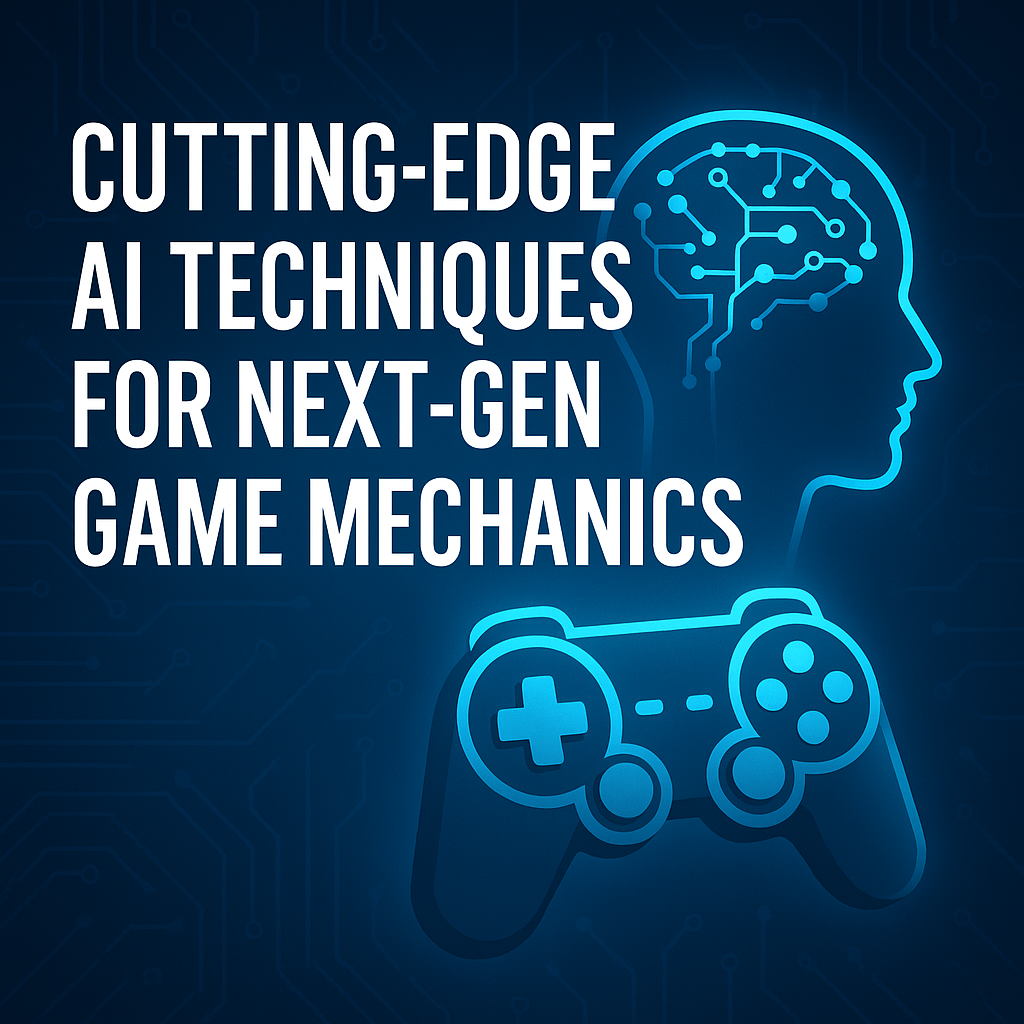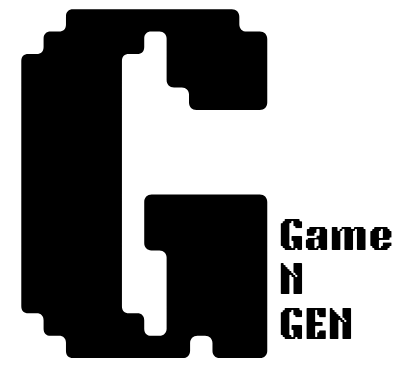| Published on gamengen.cloud By the GameNGen Editorial Team |
🎮 Introduction: The Rise of Smart Game Mechanics
In today’s world of gaming, stunning graphics alone don’t make a game memorable. What truly hooks players are game mechanics — how the world reacts, how challenges evolve, and how immersive the gameplay feels.
In 2025 and beyond, AI is powering the next evolution of game mechanics. From adaptive difficulty to real-time decision-making NPCs, the boundaries between human and machine gameplay are blurring.
This article explores the most advanced AI techniques reshaping how games are designed, played, and remembered.

Table of Contents
🤖 1. Overview of Advanced AI Techniques
Modern AI systems go far beyond simple decision trees or enemy pathfinding. Here are some of the game-changing AI technologies used in next-gen game design:
🔁 Reinforcement Learning (RL)
Used to train agents that learn by trial and error. Perfect for:
- Enemy AI that improves with player behavior
- Bots that develop their own combat styles
- Real-time combat AI in fighting or FPS games
🧠 Neural Networks
Neural networks power procedural generation, player modeling, and prediction-based decision systems. These networks simulate human-like responses, reactions, and behaviors at scale.
🎨 GANs (Generative Adversarial Networks)
While more known for visuals, GANs are now used for:
- Dynamic character creation
- Generating unique assets or levels
- Creating diverse facial animations or skins
📚 LLMs & Transformer Models
Large Language Models (like GPT, Claude, Mistral) are integrated into NPC dialogue systems and branching narratives. These models allow for unscripted, intelligent, and emotionally responsive interactions.
🕹️ 2. Real In-Game Applications of AI Mechanics
Advanced AI isn’t just theory. Here are practical use cases seen in games today:
🎯 Dynamic Difficulty Adjustment
Games like Left 4 Dead, Resident Evil 4 Remake, and Dead Cells use AI to monitor how well players perform — adjusting the challenge accordingly. This makes games more accessible yet never boring.
🧬 Procedural Storytelling
Titles like AI Dungeon and experiments in Skyrim mods now use LLMs to generate dialogue and quests on the fly, influenced by player history, tone, and choices.
🗺️ Adaptive Game Worlds
AI models adjust weather, NPC routines, and side quest behavior depending on time of day, past decisions, and real-time goals. The world feels “alive.”
🧠 Player Behavior Prediction
ML models are now trained to analyze player behavior and suggest difficulty, plot choices, or enemy placement tailored to individual patterns.
🔧 3. Tool Highlight: Game Mechanics Calculator →
Our custom-built Game Mechanics Calculator helps developers simulate and optimize core gameplay loops using AI-based logic patterns.
Use it to:
- Model AI response times
- Balance reward vs challenge loops
- Predict player choices and response arcs
🔗 Try it now → Visit the Calculator
⚖️ 4. Ethical & Technical Challenges
While the potential is huge, AI in games raises important questions:
🧩 Technical
- Performance bottlenecks in real-time AI computation
- Training data bias causing unrealistic or repetitive behaviors
- Debugging AI that learns unpredictably
🔐 Ethical
- Should AI replace human writers or artists?
- Are player conversations with LLMs stored or analyzed?
- Can AI-generated difficulty punish disabled players?
The industry needs to develop guidelines for ethical AI use, especially with emotional and decision-based systems becoming common.
🚀 5. The Future of Game Mechanics: AI Will Design the Game
By 2030, we expect:
- AI to automatically balance games based on heatmaps and telemetry
- NPCs to form lasting relationships with players
- Fully emergent games, where story, world, and mechanics evolve uniquely for each player
As neural game engines become mainstream, AI won’t just be part of the gameplay — it will design the gameplay itself.
What is AI-driven game mechanics?
AI-driven game mechanics use machine learning and neural networks to adapt gameplay in real-time. This includes adjusting difficulty, generating content, or predicting player behavior. It creates smarter, more dynamic, and personalized gaming experiences.
How is reinforcement learning used in games?
Reinforcement learning trains game agents through trial and error to find optimal strategies. It’s used in combat AI, self-learning enemies, and NPC behavior. These agents evolve over time, creating challenging and lifelike gameplay.
Can AI create game stories?
Yes, modern AI tools like LLMs (e.g. GPT-4) generate adaptive narratives and dialogues. They respond to player decisions, tone, and playstyle, allowing for unique and emergent storytelling. This leads to deeply immersive and replayable experiences.
Is AI replacing game designers?
No, AI is a tool — not a replacement. It helps automate repetitive tasks, balance mechanics, or enhance creativity. Game designers still guide the experience; AI just gives them superpowers to build faster and smarter.
⚡ Ready to Power Up Your Game Dev Workflow?
Try our Game Mechanics Calculator and other AI-powered game tools — free and instant.
👉 Explore All Tools on GameNGen.Cloud
No sign-up. No limits. Just smart game dev.
